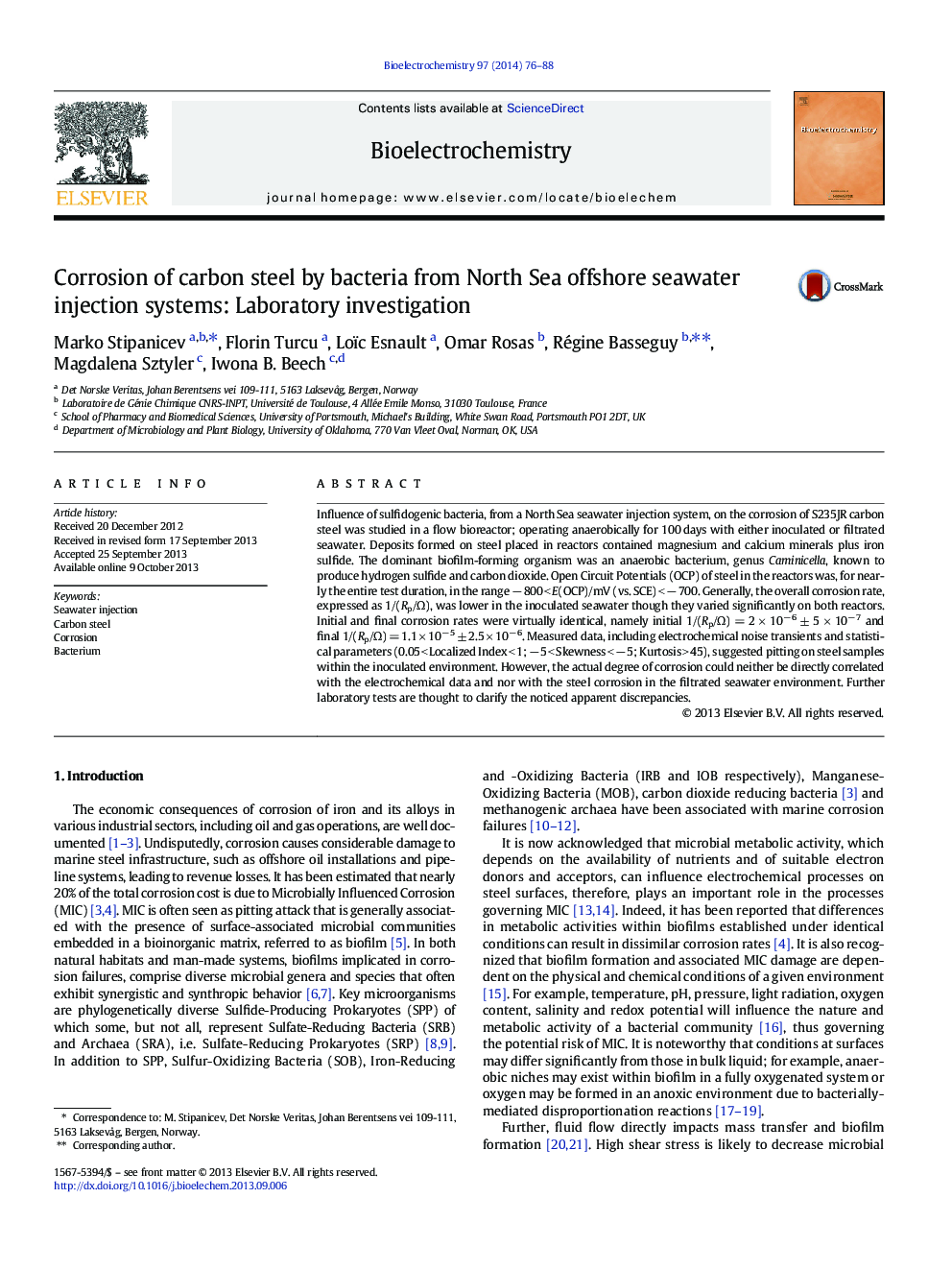| Article ID | Journal | Published Year | Pages | File Type |
|---|---|---|---|---|
| 1267994 | Bioelectrochemistry | 2014 | 13 Pages |
•Anoxic sulfidogenic bacterial consortium was obtained from field samples.•Carbon steel was exposed to sterile and consortium-seeded seawater in a bioreactor.•Dihydrogen sulfide and carbon dioxide producing Caminicella spp. dominated biofilms.•The consortium presence had no obvious effect on carbon steel integrity.•Carbonaceous corrosion deposits on biofilmed specimens moderated sulfide attack.
Influence of sulfidogenic bacteria, from a North Sea seawater injection system, on the corrosion of S235JR carbon steel was studied in a flow bioreactor; operating anaerobically for 100 days with either inoculated or filtrated seawater. Deposits formed on steel placed in reactors contained magnesium and calcium minerals plus iron sulfide. The dominant biofilm-forming organism was an anaerobic bacterium, genus Caminicella, known to produce hydrogen sulfide and carbon dioxide. Open Circuit Potentials (OCP) of steel in the reactors was, for nearly the entire test duration, in the range − 800 < E(OCP)/mV (vs. SCE) < − 700. Generally, the overall corrosion rate, expressed as 1/(Rp/Ω), was lower in the inoculated seawater though they varied significantly on both reactors. Initial and final corrosion rates were virtually identical, namely initial 1/(Rp/Ω) = 2 × 10− 6 ± 5 × 10− 7 and final 1/(Rp/Ω) = 1.1 × 10− 5 ± 2.5 × 10− 6. Measured data, including electrochemical noise transients and statistical parameters (0.05 < Localized Index < 1; − 5 < Skewness < − 5; Kurtosis > 45), suggested pitting on steel samples within the inoculated environment. However, the actual degree of corrosion could neither be directly correlated with the electrochemical data and nor with the steel corrosion in the filtrated seawater environment. Further laboratory tests are thought to clarify the noticed apparent discrepancies.
